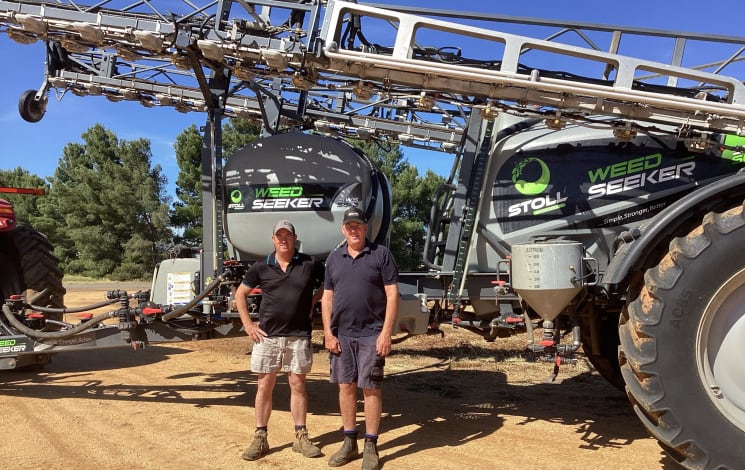RISING input costs are prompting many growers to search for savings opportunities and for Beulah grower Nathan Williams, it led to an investment in spot spraying technology last summer.
The benefits were immediate, with an 80 per cent saving on herbicide during the first round of summer weed spraying after harvest.
The Williams' were targeting heliotrope, bindi eye and melon summer weeds, as well as volunteer cereals and legumes.
"In our first round of spraying, we normally use 10,000 litres of Roundup and we only used 2000L,'' Nathan said.
The family crops 5600 hectares to wheat, barley and lentils, as well as vetch and oats for hay, at their Beulah property in the southern Mallee region.
Latest Stories
Weeds are a constant threat, particularly ryegrass, including herbicide–resistant populations, and brome grass.
Consequently, hay has remained a strong component of their cropping program, while crop–topping of barley and desiccation of lentils also is carried out to help reduce weed seed numbers.
The Williams' have a Case IH Patriot sprayer for use during the cropping season and decided to add to it with a Stoll WeedSeeker 2 trailing boomspray for both in–crop and summer spot spraying.
Nathan said he viewed the Stoll WeedSeeker 2 system at Belle–Vue Machinery at Warracknabeal, where he also previously purchased a Morris Quantum air drill and New Holland harvesters.
The Stoll WeedSeeker 2 boomspray includes two tanks, a 6000L tank and another 2000L tank, each connected to a line and with two Hypro pumps used to run each individual line.
The WeedSeeker 2 sensors can be installed in about 30 minutes, offering growers the opportunity to spot spray over summer before switching to blanket spraying during the growing season, or both lines can be used at the same time.
Growers can effectively apply pre–emergent herbicides while targeting bigger weeds with knockdown herbicides using the WeedSeeker 2 line all in the one pass, which also saves tractor hours.
If necessary, larger weeds can be controlled by increasing the WeedSeeker 2 spray rate.
Nathan said this was a significant benefit, while a range of other positive features also gave WeedSeeker 2 the nod over alternate systems.
"It had a bit more to offer, particularly its ability to operate at any time of the day,'' he said.
Compared with other spot spray systems, the WeedSeeker 2 technology uses two light sources for weed detection, including both red and near–infrared, and so is not affected by changing background conditions or dust.
Nathan said ISOBUS compatibility enabled a quick plug–in and auto–calibration via the intelligent, self–learning WeedSeeker 2 sensors, which allows them to constantly adjust to the environment they work in, provided for easy operation.
"We fold the boom out, turn the cameras on, they calibrate and then away we go.'' Nathan said.
He said the 36.5–metre Stoll boom, which, compared with another older boomspray, now followed the same row–track as the Case IH Patriot, was working well.
Section control with WeedSeeker 2 was valuable to eliminate double rate applications and, hence, avoid potential residual issues for following crops, while Nathan also was looking forward to the addition of the Raven XRT high resolution auto–height system on his rig to help maintain optimum boom height.
He said operating a suspended boom rather than an alternate ground glider system also allowed him to lift it up over fence lines – and it was comforting that the system would blanket spray if the sensors became out of range.
"With a ground glider system, you can have a mistake with a fence line and have some fun, especially when they are $3500 per camera.''
Weed mapping, which pinpoints where and when weeds are treated in paddocks and, hence, can assist with herbicide resistance management, also is available with the WeedSeeker 2 system.














